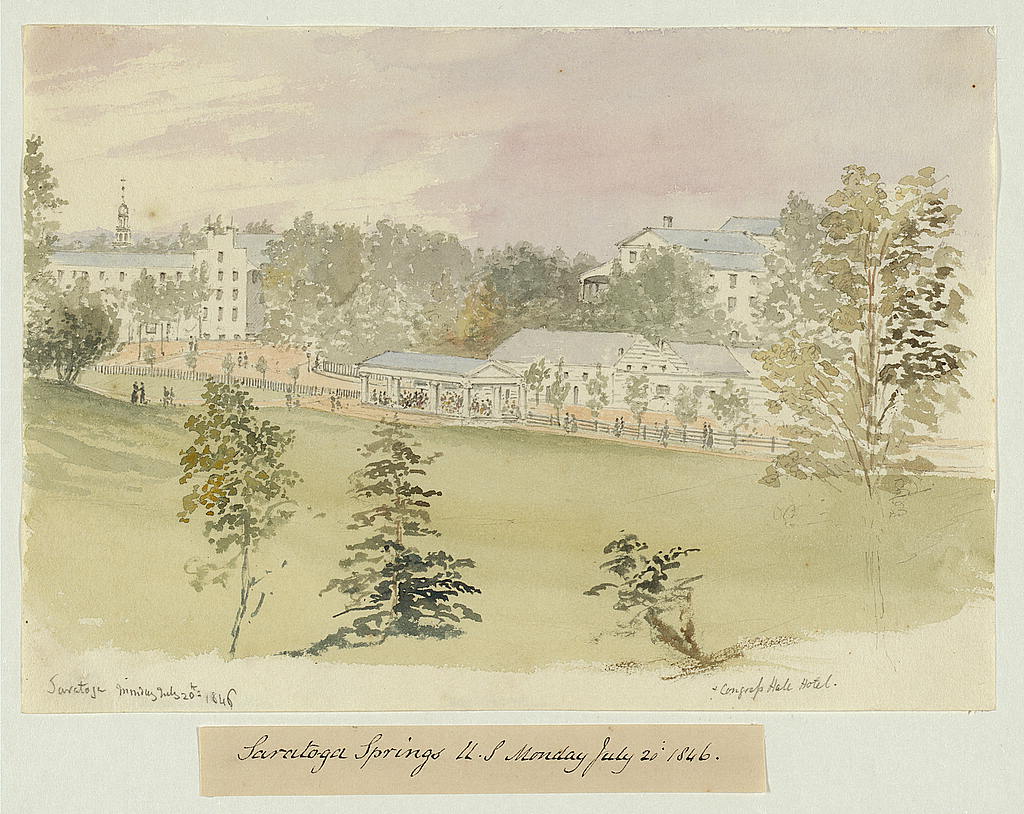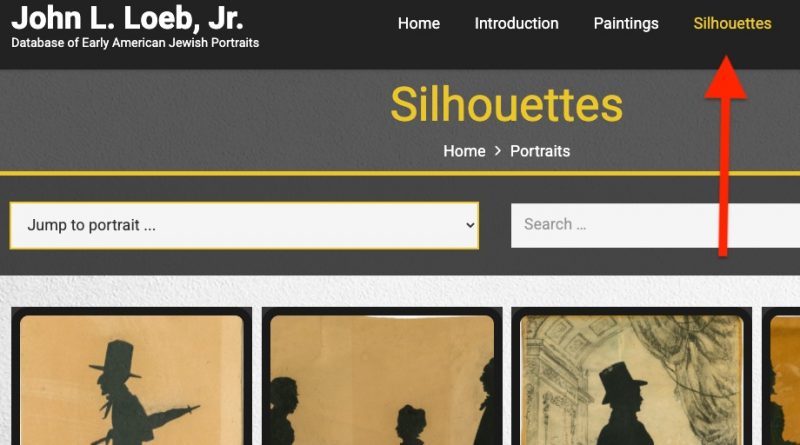When you visit the Loeb Jewish Portrait Database, the second category of portraits you will find are silhouettes.
“In the era immediately preceding photography, silhouettes were all the rage: They were cheap, quick, and, at their best, they captured the essence of an individual. One of the greatest silhouette makers was Augustin Edouart, who, unlike inferior talents, could cut a likeness freehand in a few seconds, without the crutch of machines, shadows, or paint. Having made more than six thousand likenesses in England and Scotland, Edouart came to the United States in the late 1830s and became a favorite at vacation spots like Saratoga Springs, New York” (Leibman, “Of Dogs, Vacations, and Jews,” 90).

“When faced with an early portrait, I usually begin with three questions: (1) What genre does the portrait manipulate? (2) Who made the portrait, when and where? and (3) What does the portrait proclaim about the sitters? Early American portraits employ a variety of genres with distinct conventions. Prior to the invention of the daguerreotype in 1839, the most popular genres of portraiture patronized by early American Jews were miniatures painted on ivory, half- and full-length paintings, drawings in pen or crayon, and silhouettes. Silhouettes offered both value and social cachet. To have your portrait cut by Edouart, for example, was to place yourself among the ranks of the royal family, famous authors, and statesmen, yet silhouettes were much cheaper than most other kinds of portraits and typically cost only one to six shillings.4 Both professionals and amateurs made silhouettes, including Jewish women, as evidenced by Edouart’s portrait of Rebecca Moses cutting a silhouette5” (Leibman, “Of Dogs, Vacations, and Jews,” 90).
Augustin Amant Constance Fidele Edouart, “Rebecca Moses cutting silhouettes of her friends Fanny and Hyam Asher” (1840). Silhouette, 8 3/4 x 11 1/2 in. American Jewish Historical Society
Silhouette are important sources of information about more than Jewish arts. Silhouettes also provide important information about Jewish clothing during the 1840s, particularly hats. Hats didn’t signal Jewish observance in the way they might today. Rather, hat etiquette was important for all American men. Men were expected to take their hats off in the presence of ladies, and failing to do so signaled one was “not the right sort of person” (Leibman “Family Silhouettes,” 190).
In addition, silhouette can help us understand gender norms. When looking at a silhouette notice who sits and who stands, and who faces whom. Also notice in the silhouette above that each person holds a characteristic object. This was typical in Edouart’s work. Children often carry toys, but women often carried objects gendered female such as flowers, fruit, birds, handkerchiefs, and fans. Men on the other hand often carry men’s hats or “authority sticks” such as whips, canes. (Leibman “Family Silhouettes,” 187; Hemphill, Siblings, 99).
Resources
Hemphill, C. Dallett. Siblings: Brothers and Sisters in American History. New York: Oxford UP, 2011.
Hughes, Clair. Hats. London: Bloomsbury Visual Arts, 2017. Print.
Leibman, Laura. “Of Dogs, Vacations, and Jews.” American Jewish History 101, no. 1 (2017): 90-93. doi:10.1353/ajh.2017.0011.
Leibman, Laura Arnold. “Family Silhouettes.” In The Art of the Jewish Family: A History of Women in Early New York in Five Objects, 168-96. New York City: Bard Graduate Center, 2020. doi:10.2307/j.ctv12fw8df.12.

